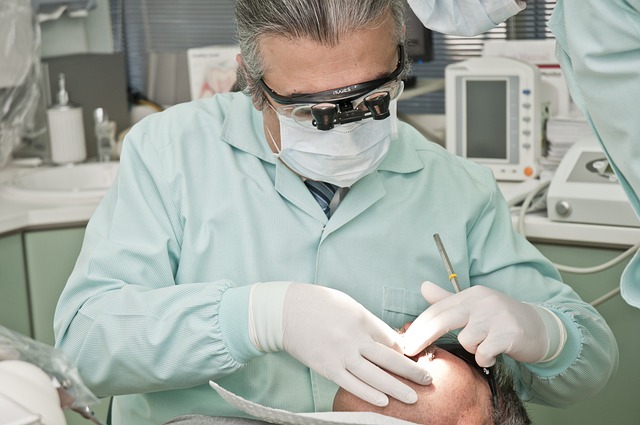Have you been considering getting veneers for your teeth? Before you make a decision, it’s important to understand the pros and cons of both porcelain and composite veneers. Let’s dive into the details to help you make an informed choice for your smile. Porcelain veneers are a popular cosmetic dental treatment that can dramatically enhance the appearance of your smile. They are ultra-thin ceramic shells that are custom-made to cover the front surfaces of your teeth, providing a natural-looking and dazzling smile. Understanding the advantages and disadvantages of porcelain veneers is crucial before deciding if this is the right option for you.
2. A Comprehensive Comparison: Porcelain and Composite Veneers
When considering dental veneers, two popular options that often come up are porcelain veneers and composite veneers. Each type has its own unique qualities and understanding the differences between them is crucial in making an informed decision:
-
- Porcelain Veneers:
- Made from high-quality dental porcelain, these veneers are exceptionally durable and resistant to stains.
- Porcelain veneers provide a natural-looking appearance, mimicking the translucency of natural teeth.
- They are custom-made in a dental laboratory and require two separate visits to the dentist, as they are bonded to the teeth using a strong dental cement.
- This type of veneer is highly resistant to chipping, making it a long-lasting option with proper care.
- Porcelain veneers are beneficial for correcting severe tooth discolorations, gaps, and even minor misalignments.
- Composite Veneers:
- Made from a tooth-colored composite resin material, these veneers are directly applied and shaped by the dentist during a single visit.
- Composite veneers are a more cost-effective option compared to porcelain veneers.
- They can be modified and repaired easier than porcelain veneers.
- Composite veneers are a suitable option for addressing minor cosmetic issues like small chips, cracks, or tooth discolorations.
- They require minimal enamel removal and are reversible since they can be easily removed without damaging the natural teeth.
-
-
3. The Pros and Cons of Porcelain Veneers: What You Need to Know
Porcelain veneers offer many advantages for those looking to enhance their smile, but it’s important to weigh the pros and cons before making a decision. Let’s start with the pros:
- Natural Appearance: Porcelain veneers are designed to mimic the look and feel of natural teeth, providing a seamless and attractive smile.
- Stain Resistance: Unlike natural teeth, porcelain veneers are highly resistant to stains, meaning you can enjoy your favorite foods and beverages without worrying about discoloration.
- Longevity: With proper care and maintenance, porcelain veneers can last up to 10-15 years, making them a long-lasting solution for smile transformations.
- Minimal Tooth Alteration: In most cases, only a small amount of enamel needs to be removed from the tooth surface before placing veneers, preserving the integrity of the natural tooth structure.
Now, let’s consider the cons:
-
- Cost: Porcelain veneers can be a significant investment, as they are a more expensive option compared to other cosmetic treatments. However, their durability and natural appearance often justify the cost.
- Permanent Alteration: Once the tooth enamel is removed, it cannot be replaced. This means that opting for porcelain veneers is a permanent decision that requires commitment.
- Potential Sensitivity: Some individuals may experience temporary sensitivity after getting veneers, especially to hot or cold temperatures. However, this discomfort usually subsides within a few weeks.
- Not Suitable for Severe Dental Issues: While porcelain veneers can address various cosmetic concerns, they are not recommended for individuals with severe tooth decay or gum disease. Proper dental health should be established before considering veneers.
By weighing both the pros and cons, you can make an informed decision about whether porcelain veneers are the right choice for your smile makeover. Consulting with a qualified dentist will also provide valuable insights tailored to your specific dental needs.
4. Composite Veneers: Examining the Benefits and Drawbacks
Composite veneers are a popular dental treatment option that can significantly improve the appearance of your teeth. Made from a tooth-colored resin, composite veneers are custom-made to fit over your existing teeth, providing a natural-looking smile. In this section, we will examine the benefits and drawbacks of this dental procedure.
Benefits of Composite Veneers:
-
- Enhanced Aesthetics: One of the main advantages of composite veneers is their ability to dramatically improve the appearance of your teeth. They can address various cosmetic issues such as discoloration, gaps, and misaligned teeth.
- Minimal Tooth Alteration: Unlike porcelain veneers, composite veneers require minimal alteration of your natural teeth enamel. The procedure is generally less invasive, allowing for a more conservative approach to achieving a beautiful smile.
- Quick and Customizable: The process of getting composite veneers is usually quicker than other restorative options. The material is applied directly to your teeth, and the color and shape can be customized to match your desired look.
Drawbacks of Composite Veneers:
-
- Less Durability: While composite veneers are quite durable, they are more prone to staining, chipping, and wearing down compared to porcelain veneers. Regular maintenance and replacement may be required over time.
- Less Natural Translucency: Porcelain veneers typically offer better translucency, giving a more natural appearance to the teeth. Composite veneers may appear slightly less natural because the material does not mimic the light-reflecting properties of natural enamel as closely.
- Not Appropriate for Major Orthodontic Issues: If you have severe misalignment or bite problems, composite veneers may not be the ideal solution. In such cases, orthodontic treatments or more extensive restorations may be necessary.
5. Which is Right for You? Porcelain vs. Composite Veneers
When it comes to enhancing the appearance of your teeth, porcelain and composite veneers are both popular options. While they serve the same purpose of improving your smile, there are some key differences between the two that you should consider.
Porcelain veneers are a top choice for those seeking a durable and long-lasting solution. Made from high-quality ceramic material, they are custom-made to fit your teeth perfectly. Porcelain veneers are known for their natural appearance, mimicking the translucency and shine of real teeth. They are also stain-resistant and offer a strong resistance to wear and tear, lasting up to 15 years with proper care.
- High-quality ceramic material
- Custom-made for perfect fit
- Natural, translucent appearance
- Stain-resistant and durable
Composite veneers are a more affordable alternative to porcelain veneers. These veneers are made from a tooth-colored resin material that is applied directly to your teeth and then shaped and polished to achieve the desired look. Composite veneers are a great option if you are looking for a quick and less invasive procedure. While they may not be as durable as porcelain, they can last up to 7 years with proper care.
- Affordable alternative
- Tooth-colored resin material
- Quick and less invasive procedure
- Lasts up to 7 years with proper care
6. Weighing Your Options: Evaluating the Pros and Cons of Veneer Materials
Evaluating the pros and cons of veneer materials is essential before making a decision. Veneers are available in various materials, each with its own advantages and drawbacks. Understanding these factors will help you choose the veneer material that best suits your needs and preferences.
Firstly, let’s consider the advantages of veneer materials.
-
- Natural aesthetic appeal: Veneers can effortlessly mimic the appearance of real wood and other natural materials. They add a touch of elegance and warmth to your space.
- Durability: Veneers are generally sturdy and resistant to wear and tear. They can withstand moisture, making them suitable for kitchen and bathroom applications.
- Wide range of choices: With veneers, you have a vast selection of patterns, colors, and grains. Whether you prefer a classic look or a contemporary design, there’s a veneer material to match your style.
On the other hand, it’s important to be aware of the potential disadvantages of veneer materials.
-
- Prone to scratching: While durable, veneers are still susceptible to scratches, especially if they have a thinner finish. It’s advisable to use protective measures to prevent any noticeable damage.
- Cost: Compared to other types of finishes, veneers can be more expensive. However, it’s crucial to weigh the long-term benefits against the initial investment.
- Requires professional installation: Achieving a flawless veneer finish often requires the expertise of a professional. DIY installations may lead to unsatisfactory results or damage to the material.
7. Porcelain Veneers Unveiled: The Advantages and Disadvantages
Porcelain veneers have become increasingly popular in the field of cosmetic dentistry due to their ability to transform smiles. These thin, custom-made shells are bonded to the front surface of teeth, effectively hiding imperfections and enhancing the overall appearance. There are several advantages to choosing porcelain veneers:
- Natural Appearance: Porcelain veneers are designed to mimic the look and feel of natural teeth, providing a seamless and lifelike result.
- Stain Resistance: Unlike natural teeth, porcelain veneers are highly resistant to stains from coffee, tea, and other common culprits, making them a great option for those who want a bright and white smile.
- Durability: Porcelain veneers are strong and durable, able to withstand daily wear and tear without losing their shape or color.
- Quick Results: In just a few visits to your dentist, you can achieve a smile transformation with porcelain veneers. The process is relatively fast compared to other cosmetic dental options.
However, it’s important to be aware of the potential disadvantages that come with porcelain veneers:
-
- Irreversible Procedure: The process of placing porcelain veneers requires the removal of a small amount of enamel from the teeth. This is an irreversible process, so it’s crucial to weigh the pros and cons carefully before proceeding.
- Sensitivity: Some individuals may experience increased tooth sensitivity after getting veneers. This usually subsides within a few days or weeks, but it’s important to discuss this possibility with your dentist.
- Cost: Porcelain veneers can be a significant investment, as they are a cosmetic treatment not typically covered by insurance. However, many patients find the long-term benefits of a beautiful smile outweigh the initial cost.
- Maintenance: While porcelain veneers are generally low-maintenance, they still require regular brushing, flossing, and dental check-ups to ensure their longevity.
8. Composite Veneers Under the Spotlight: Exploring the Pros and Cons
Composite veneers are gaining popularity as a cosmetic dental solution due to their unique advantages and potential drawbacks. Let’s delve into the pros and cons of this dental treatment option:
Pros of Composite Veneers:
-
- Cost-effective: Compared to porcelain veneers, composite veneers tend to be less expensive, making them a more affordable choice for achieving a dazzling smile.
- Minimally invasive: The application of composite veneers typically involves minimal alteration of the natural teeth, preserving their structure and reducing the need for extensive enamel removal.
- Quick procedure: The process of getting composite veneers is generally faster compared to other veneer options. In many cases, these veneers can be placed in just one visit, saving you time at the dental office.
- Easy repair: In the event of damage or staining, composite veneers can be easily repaired or replaced, without the need for complete removal.
Cons of Composite Veneers:
- Less stain resistance: While composite veneers are initially highly resistant to staining, they can be more prone to discoloration over time compared to their porcelain counterparts.
- Shorter lifespan: Composite veneers generally have a shorter lifespan compared to porcelain veneers, typically lasting around 5-7 years, although this can vary depending on individual oral hygiene and lifestyle habits.
- Less natural appearance: Although composite veneers can produce remarkable aesthetic improvements, porcelain veneers generally offer a more natural and translucent appearance, mimicking the characteristics of natural teeth with greater accuracy.
9. Making the Right Choice: Porcelain or Composite Veneers
When it comes to enhancing your smile, choosing the right veneers is crucial. Porcelain and composite veneers are two popular options available today. Both offer their own unique benefits, and understanding the differences can help you make an informed decision.
Porcelain veneers:
-
- Porcelain veneers are crafted from high-quality ceramic, providing exceptional durability.
- They closely resemble natural teeth, offering a realistic and attractive appearance.
- Porcelain veneers are stain-resistant, ensuring long-lasting whiteness.
- This option requires minimal maintenance, making it convenient for busy individuals.
- Porcelain veneers are highly resistant to chipping and cracking, promoting durability and longevity.
Composite veneers:
-
- Composite veneers are a more affordable option, making them a popular choice for budget-conscious individuals.
- They can be directly applied to the teeth, requiring fewer visits to the dentist.
- Composite veneers are easily repairable, making them a suitable choice for individuals who may have a history of dental problems.
- This option offers more flexibility in terms of shaping and contouring.
- Composite veneers are a great choice for minor cosmetic adjustments, such as fixing small gaps or chips in the teeth.
Considering your personal preferences and consulting with a dental professional will help you determine the best option for your specific needs. Whether you choose porcelain or composite veneers, you can achieve a stunning smile that boosts your confidence and leaves a lasting impression.
10. The Pros and Cons of Different Veneer Types: Porcelain vs. Composite
When considering veneers, it’s important to understand the benefits and drawbacks of the various options available. Two popular types of veneers are porcelain and composite. Each has its own advantages and disadvantages that you should weigh before making a decision.
Porcelain Veneers:
-
- Pros:
-
- Exceptional durability, lasting up to 15 years or more.
- Stain-resistant, maintaining their natural appearance over time.
- Highly customizable, offering a wide range of shapes, sizes, and shades.
- Can mimic the translucency of natural teeth for a more realistic look.
- Minimal maintenance required, with regular oral hygiene practices sufficient to keep them looking great.
- Cons:
-
- Require multiple visits to the dentist for preparation and placement.
- More costly compared to composite veneers.
- Fragile and prone to chipping or cracking if exposed to excessive force.
- Irreversible process, as some enamel must be removed to accommodate the veneers.
Composite Veneers:
-
- Pros:
-
- Less expensive compared to porcelain veneers.
- Versatile and can be directly applied in a single dental visit.
- Repairable if chipped or damaged, unlike porcelain veneers.
- Minimal enamel removal required.
- Can easily be removed or replaced.
- Cons:
-
- Shorter lifespan compared to porcelain veneers, usually lasting around 5 to 7 years.
- More prone to staining over time, requiring more frequent polishing.
- Less natural-looking compared to porcelain, as they may lack translucency.
- Regular maintenance and periodic replacements may be necessary to retain their appearance.
Ultimately, the choice between porcelain and composite veneers depends on your desired outcome, budget, and specific dental needs. Consulting with a qualified dentist will help determine which option is best for you, ensuring your new veneers enhance your smile for years to come.
Conclusion
In conclusion, porcelain veneers offer superior durability and stain resistance, while composite veneers are more affordable and easily repaired. Understand your needs and consult with a dentist to determine the best option for your desired smile makeover. Choose wisely and enjoy the benefits of a confident and beautiful smile. #VeneerComparison


